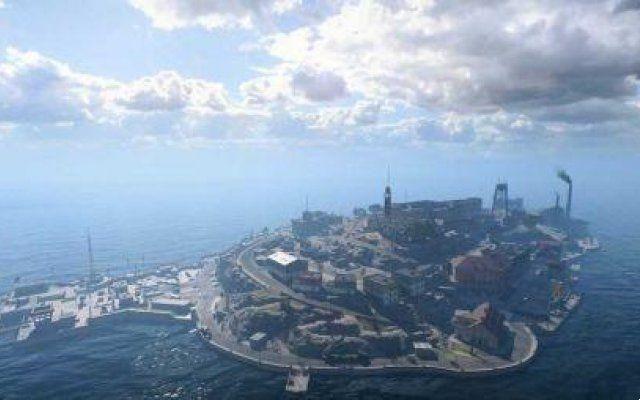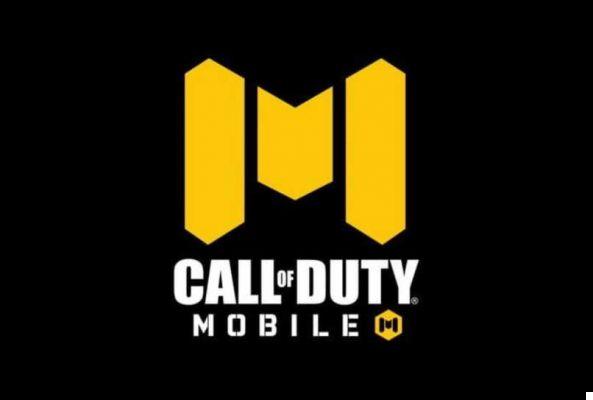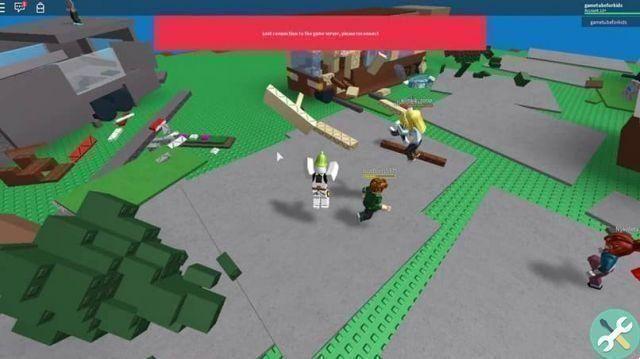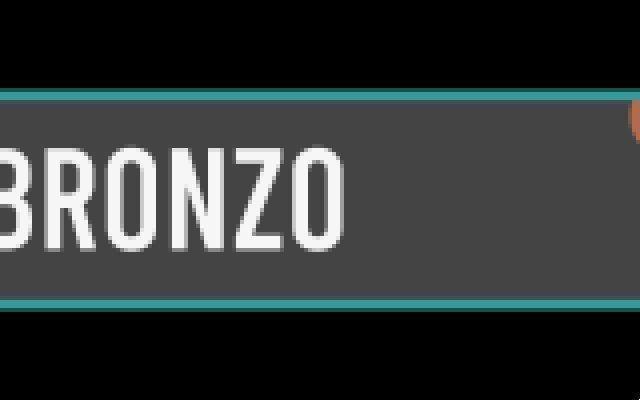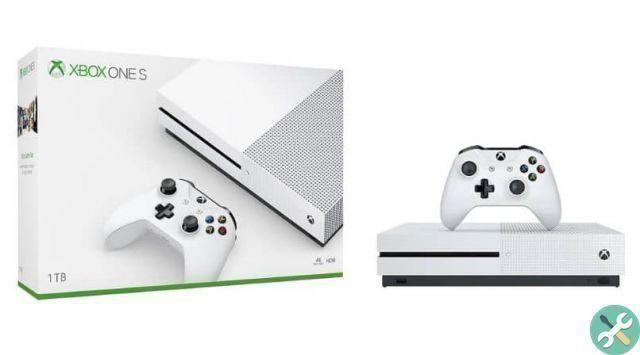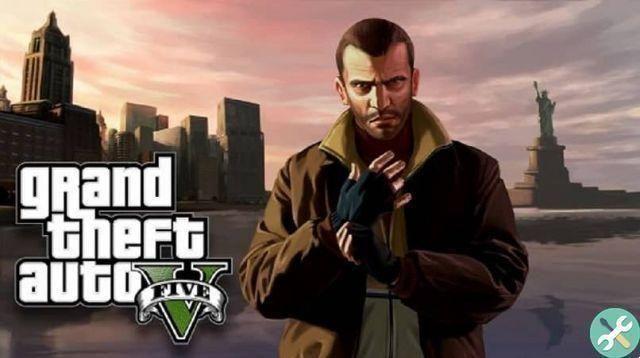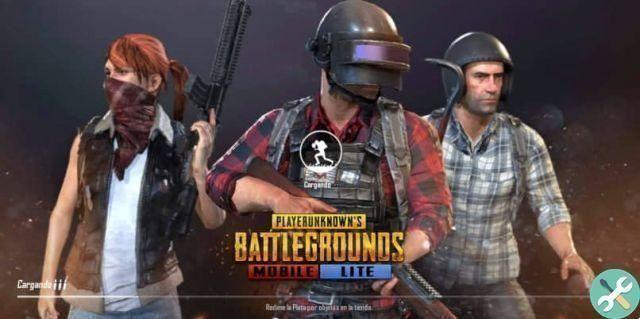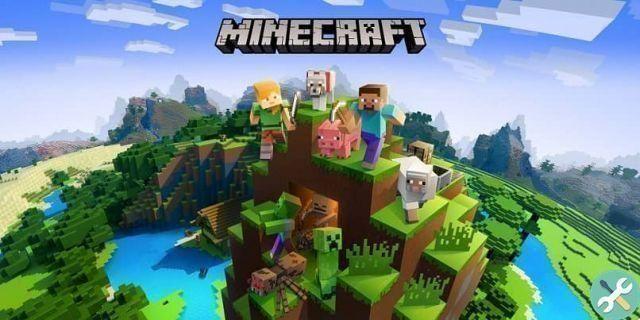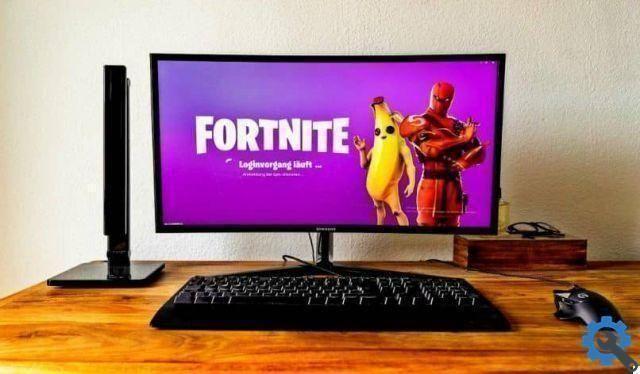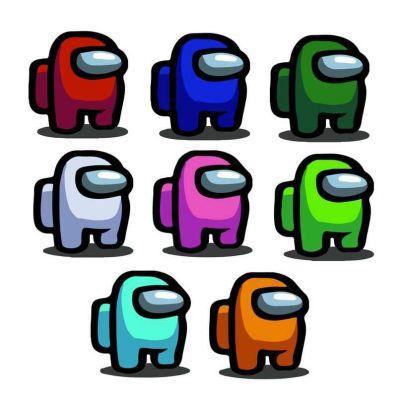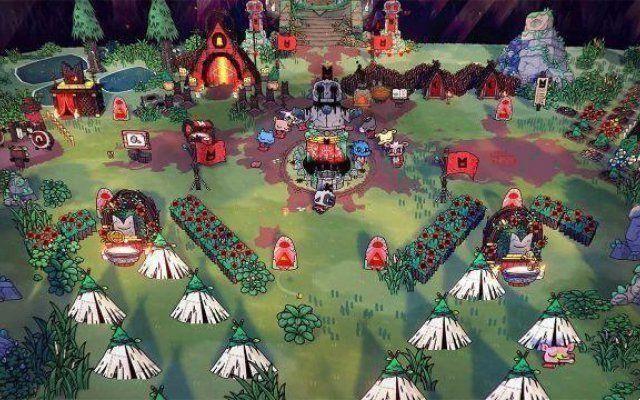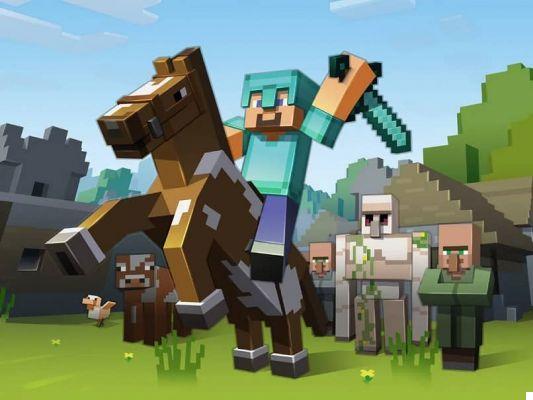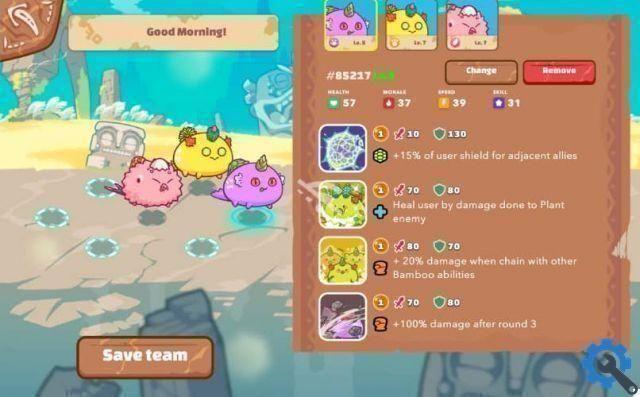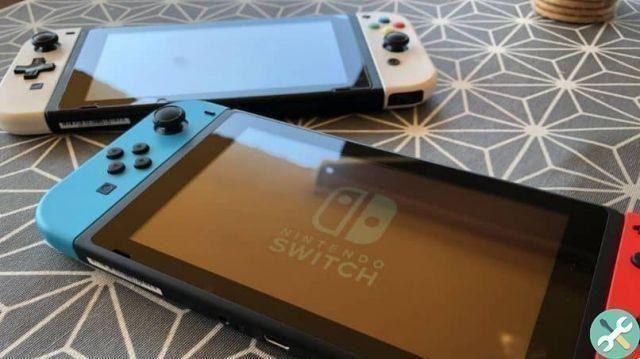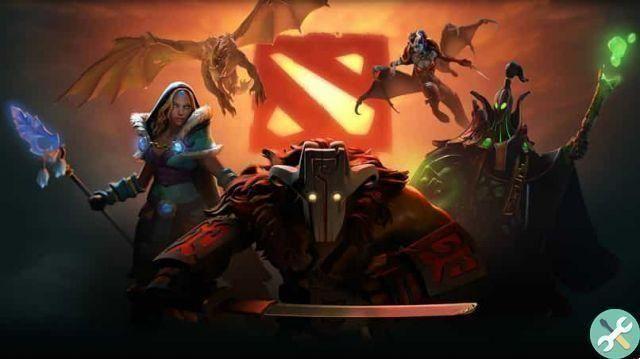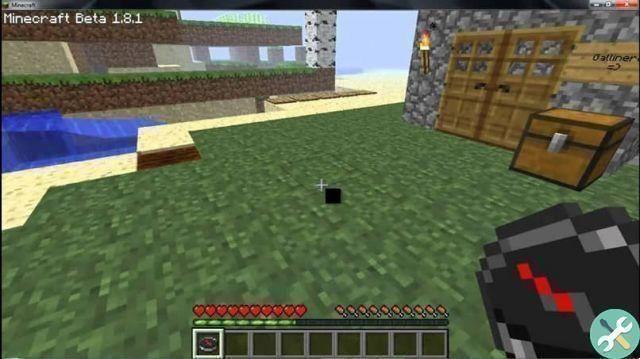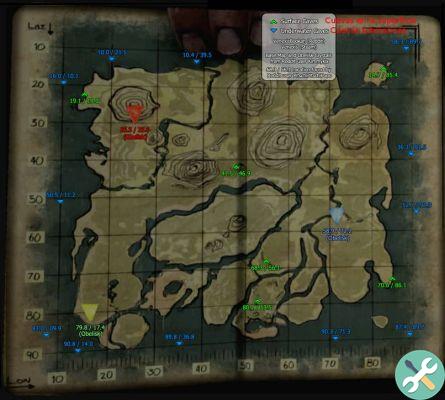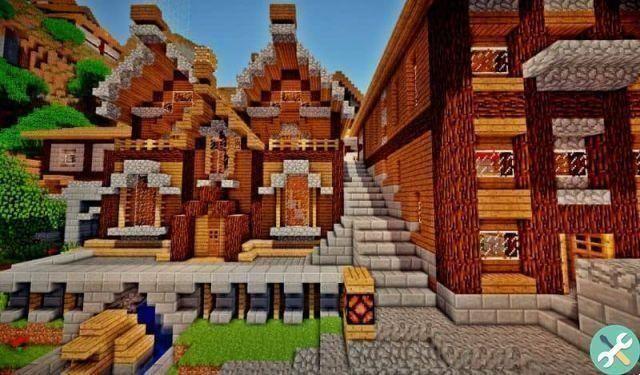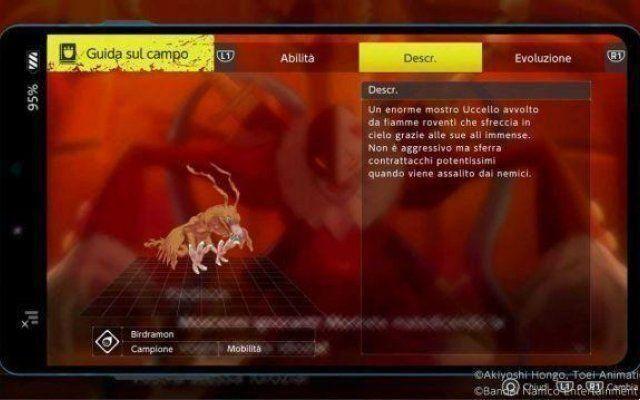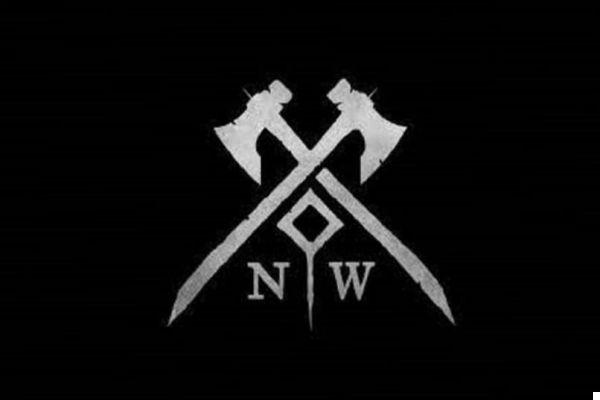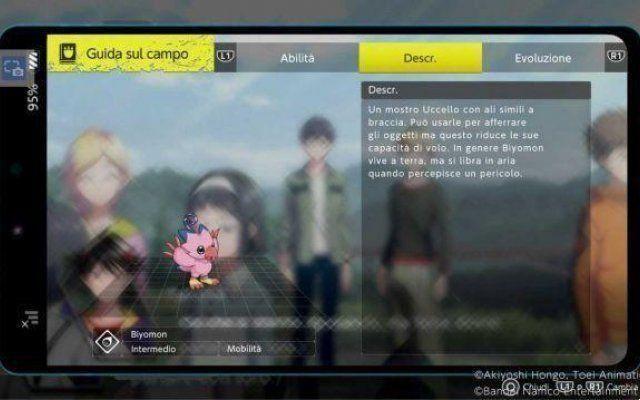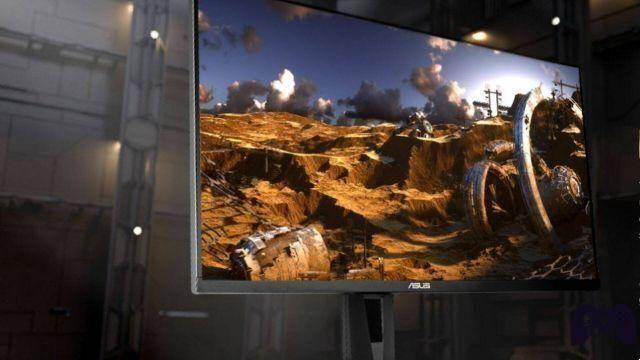Please note:
The guide is based on the US version of the game, so you may find some differences in the Spanish version.
Introduction
Let's assume that everyone who is going to read this guide knows what a fighting game is. And to all intents and purposes, Super Smash Bros. can be considered a fighting game, even if it is profoundly different from all other games of this genre on consoles or PC. Generally in a fighting game you have to hit the opponent repeatedly until his life bar is completely exhausted; in Super Smash. Bros. instead, the shots are used to make the other fighters present in the arena lighter. If you have been careful, we talked about fighters, and this detail presupposes another difference: although it is possible to clash 1 vs 1, in Super Smash Bros. often the battles require the presence on the screen of a higher number of fighters. Ok, these premises should be enough to make you understand that Super Smash Bros. is a decidedly peculiar fighting game to be faced with a different spirit and mentality than the others. The secret of its success probably lies in the fact that you don't need a guide to have fun, just sit in front of the TV and improvise following its simple mechanics. However, if your intention is not simply to have fun, but want to dominate the challenges with your friends and then export your skills all over the world, sit back and pay attention to everything we are about to reveal to you. Simple in fact does not mean trivial: under the mechanics accessible to all, there is in fact a world of details that only the best players know and master.
The basics
So let's start with the basic considerations on the game mechanics before going to examine all the other aspects. The ultimate goal in a Super Smash Bros. match is to throw opponents off the screen. This action can have different consequences depending on the type of game you are participating in: in some cases sending an opponent beyond the confines of the arena can mean his elimination, in others the fall is simply punished with penalty points. As we said, to facilitate the fall of your opponents from the boundaries of the arena you have to hit them to make them lighter, that is, by increasing the percentage indicated at the bottom in the area where the name is also displayed. In fact, the higher that percentage is raised, the lighter the character becomes, and therefore the easier it is to throw him around the scenario by scoring hits.
Depending on the type of meeting you participate in, the fall can have a different weight. We will see shortly the different types of meetings explained in detail, but generally speaking, there are two macro-categories of meetings: timed and screw-based. In the first case a time limit is imposed and every fall from the stage is indeed important, because it penalizes the score of the wrestler who suffers it, but not decisive for the final result. On the contrary, in screw matches the number of times in which it is allowed to fall from the scenario is limited to once: once the lives at one's disposal are exhausted, all that remains is to act as a spectator waiting for the last survivor to grab the final victory. To avoid the fall, however, it is possible to resort to the double jump or the special recovery move, even if their effectiveness is obviously not guaranteed on every occasion.
As expected, your strategy must be based at least in part on the rules governing the meeting you are attending. Simplifying things, in a timed match you can afford a more aggressive attitude and maybe risk falling from the stage, while avoiding falling must necessarily become your primary goal in a game where the number of lives is limited. However, the way a match is approached also depends on other variables. To name a few: the character you use, the other characters present in the game, the arena where the match takes place. All elements that we will examine in the next paragraphs.
Controls
Before delving into the large number of characters and stages included in the game, it is time to talk a little more in depth about the controls. Maybe you know that unlike the canonical fighting games, Super Smash Bros. provides more "simple" controls, which combine a couple of attack keys together with the directional stick to perform all possible moves, without requiring more complex combinations, half moons or maneuvers. by contortionists. However, the general scheme is for all fighters and, in principle, there are two attack options: normal and special. To perform the different moves, therefore, just press the attack button (normal or special) and move the stick in one direction.
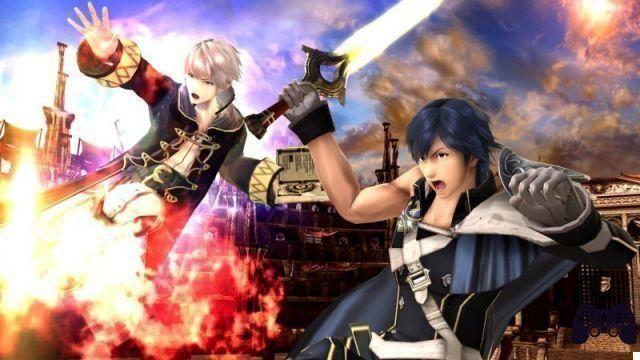
The defensive possibilities are entrusted to the button that enables a shield around the character. In this situation, by pressing another button, it is possible to perform a hold on the fighter so foolish as to come close to us. In any case, it is also possible to carry out a grip by pressing the appropriate button even when you are not inside the shield. Grapples are a particularly effective tool because they cannot be parried by raising a shield in turn. However, the shield is not infinite and is consumed with each blow immediately, until it disappears completely, leaving the fighter stunned and at the mercy of enemy blows for a few moments.
In fact, with a little dedication, you can easily dig beneath the surface and master the opportunities that controls offer deeper. Let's start with the normal attack. Pressing A in combination with the left stick pointing left, right or up will perform a normal attack; instead giving only a light tap on the stick and then pressing A (which possibly can also be pressed for a long time to charge the shot) you will land a Smash attack. B, on the other hand, is the key used for the Specials: there are four in total assigned to the combination of B + left or right / up / down in addition to pressing only the B key without matching the direction. L is used for grappling: pressed alone allows you to grab the opponent and hit him by pressing A, in combination with a direction of the left stick the grab turns into a throw. X / Y perform the jump: note that it is also possible to attack in the air by pressing A + direction immediately after taking a leap. Finally, R is the key used for the shield (the operation of which we have explained above), while pressing the directional cross allows you to perform taunts, or moves to provoke opponents. Last note on the controls: to execute a Final Smash just press the B button without directional indications. This move, however, is only possible after collecting a Smash Ball.
modality
Both the 3DS and WiiU versions of Super Smash Bros. include a wide variety of modes to choose from (not all are common to both versions, so when we examine an exclusive we will specify it at the beginning of the description). Each of these modalities can be reduced to four macro-categories. Versus modes feature battles against opponents managed by other human players or the CPU. The number of players varies from 2 to 4 on 3DS and from 2 to 8 on WiiU. The Co-op modes instead involve clashes between a team of human players and another of CPU-controlled characters, both locally and online. Training mode contains various activities that allow you to improve your fighting style. The other remaining modes are mini-games that do not involve battles against CPU-controlled characters.
Melee
The Melee is the most classic mode of Super Smash Bros. 2 to 4 fighters chosen from a multitude of characters compete on an arena chosen from an equally wide variety of alternatives to determine who is the best. Characters can be controlled by human players, the CPU or activated via Amiibo. Each match can be played under a different set of rules. Initially you can decide whether to set a time or life limit, enable the customization of the characters, establish the handicap, the influence of the damage of the previous match on the new one, the casting power and the choice of the scenario. Through the Challenges it will then be possible to unlock further rules. On WiiU, in addition to the traditional Melee, it is also possible to participate in an unprecedented Melee to 8. Obviously in this mode it is possible to involve a greater number of human players, taking advantage of the vastness of controllers supported by the console. However, note that not all arenas will be available in Melee 8 due to the large space required to accommodate more fighters.
Smash Adventure
This mode is only available in the 3DS version of the game. In its initial phase, Smash Run opens to the player a large battlefield that can be explored for five minutes inside which are scattered enemies, power-ups, crates and doors to open, coins, or equipment, in short, everything that can be expected in a common platform-adventure. The external conformation of the map is always the same, however its structure may vary slightly in some details from one game to another, in short, the positioning of the objects inside it.
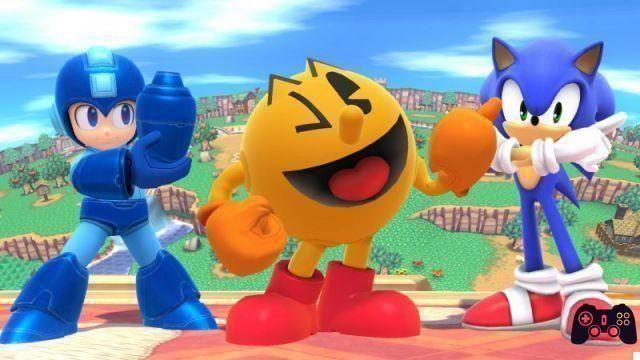
Sometimes it is possible to take advantage of special events that modify the normal rules (for example increasing the speed or the ability to jump of the characters). These five minutes must therefore be used to accumulate objects and upgrades that can then be used in the final Melee in which the winner of the session will be decreed.
Tabletop scrum
This mode is only available in the WiiU version. It is, as the name suggests, a cross between the classic mechanics of Super Smash Bros. and a board game. At the beginning of the game, instead of choosing your fighter, you have to select one of the Miis present on the console and use it as a pawn on a board similar to that of the Game of the Goose. After deciding the size of the board and the number of turns the game will consist of, we start with a virtual roll of the dice to establish how many squares each player can move. On the board are distributed power-ups, objects and characters to be assigned to the first player who will pass on the respective boxes. Some objects can be used on the board, while others are used for the Melee phases that are activated whenever two or more of the Mii in play meet on the same space during the movement. At the end of the turns, a final Melee is started in which each player will be able to use all the characters accumulated during the turn-based phase one at a time. Since this is a "screw" game, in this phase the player who has collected more characters will have an advantage and therefore can count on more lives than the others.
Classic mode
We are faced with the classic single-player mode that puts the player in front of a series of battles with the CPU in a sequence that culminates in an epic battle against a final boss. The victory in this mode can allow you to unlock one of the characters not initially available in the roster of fighters, however, depending on the level of difficulty set, you can get trophies, equipment, power-ups or customized special moves. This mode is present on both 3Ds and WiiU, albeit in a rather different form between the two consoles.
The main feature of the 3DS version is the ability to choose your own path to the boss, through three possible paths available after each fight. Depending on the color (green, yellow or red) the paths represent the level of difficulty of the battle to which they lead, moreover through a symbol they also give way to guess from which game the enemies that the player will be called to face will come from. Obviously, on the basis of the chosen path, the types of prizes that can be obtained following the victory will also vary.
On WiiU, on the other hand, the three courses are not present, so the difficulty level is calibrated on the player's ability and on the ease with which he has overcome the previous battles. Obviously it will not even be possible to choose your challengers as it happened on 3DS. On the other hand, on WiiU there is a more varied selection of the types of possible encounters, including 8-man Melees.
In both cases you will find yourself fighting at the end of the path with a final boss. At the lowest intensity levels, the last enemy of the game will be represented simply by Master Hand, already encountered in previous chapters of the saga. It is a large hand suspended in the air that will give you a lot of trouble with its attacks that range from violent slaps to the ground to punches, from laser beams to the launch of dangerous playing cards, from energetic rocket grabs that start from the fingers. . To eliminate it, it is necessary to consume its entire stamina bar.
At the highest levels Master Hand is joined by Crazy Hand. Both hands are capable of attacking separately or bringing lethal combined attacks. At the highest level of intensity (from 9.0 onwards) after the fight with Master & Crazy Hand you will also have to contend with a new enemy, Master Core. Initially this being appears as a pool of darkness with gigantic features that can only be hit in the colored area at the height of the face. After that Master Core will change its shape several times, transforming itself into a sort of beast with large teeth and a scorpion tail, then into a cluster of serrated blades, then into a dark labyrinth (this form is only present on WiiU) and finally into the shadow version of the character used by the player, enhanced from every point of view. Finally Master Core will be reduced to a black hole in the center of the stage whose gravity will attract its surroundings towards it: only at this point will it be possible to increase its damage percentage and throw it off the screen to end the grueling battle.
All-Star mode
This mode, present on both 3Ds and WiiU, resembles the Classic mode we talked about above. Also in this case, in fact, the player is faced with a series of battles against opponents controlled by the CPU. However, in this case the percentage of damage reported at the end of the fight will not be reset in view of the next one, but can at most be treated with objects at the different refreshment areas present. The sequence in which the enemies are presented is chronological and obtained on the basis of their first appearance in a video game: on 3Ds you will face enemies from the oldest to the most recent, while on WiiU you will start from the most recent up to the oldest.
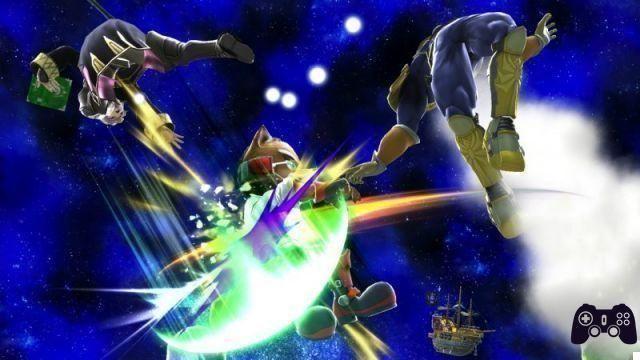
The characters that cannot be selected initially and unlocked during the game will also be added to the list of enemies present in this mode, always following the temporal order: in the list below the unlockable characters will be inserted in brackets. Victory in this mode is rewarded with a trophy of the character used. Note that it is also possible to face the All-Star mode in online co-op, but in this case the defeat of only one of the players will be enough to decree the end of the game.
Chronological list of opponents:
1980 1984
Pac-Man
Mario
Donkey Kong
Luigi
Little mac
(Mr. Game & Watch)
1985 1986
Princess Peach
Bowser
Link
Zelda
Samus
(Duck Hunt)
(R.O.B.)
1986 1990
Pit
Palutena
Mega Man
Marth
Yoshi
Captain Falcon
(Dr. Mario)
1991 1993
Sonic
Kirby
King Deede
Fox McCloud
Goal knight
(Wario)
(Falco)
1994 1998
Diddy kong
Pikachu
Charizard
Sheik
(Ness)
(Jigglypuff)
(Ganondorf)
2001 2006
citizen
Olimar
Show Link
Zero Suit Samus
Ike
Lucario
(Bowser Jr.)
2007 2013
Rosalinda & Luma
Wii Fit Trainer
Shulk
Robin
Grninja
(Dark Pit)
(Lucina)
Training
To better master Super Smash Bros. mechanics and characters, training is an indispensable component for several reasons. In the first place it allows you to get carried away with the characters without the frenzy of the encounter, to freely try out moves and combinations, in short, to get used to the functioning of every aspect of the game. However, this is true for every training mode of any fighting game. The training of Super Smash Bros. instead deserves a deeper look. Thanks to the possibility of activating a special indicator on the screen, it is possible, for example, to find out the percentage of damage inflicted by each single move or combo that is performed, even by activating the customizations. Another very important detail in a fighting game is the possibility of studying movements and animations to understand precisely how and when the contact between the wrestlers takes place. To facilitate this in-depth study, SSB allows you to reduce the game speed during training to 2/3, ½, ¼, or even play in slow motion by holding down the directional stick. Other possibilities of intervention on the training conditions concern the number of characters controlled by the CPU, the behavior of the CPU (stop, run, jump, attack), the percentage of initial damage and the position of the camera.
Multiple Melee
This mode, available on both WiiU and 3DS, pits the player against a series of waves of enemies, made up almost exclusively of Miis, to be defeated under certain conditions. As we will see shortly, the variables of this mode are different, but in general there are some useful tips that can be kept in mind every time you face a Multi Scrum. First, get attached to a quick attack from your character that sends the enemy into the air. The Mii that are deployed against you, in fact, are often very light and it takes very little to lift them from the ground and eliminate them. Often, however, you will have an urgent need to eliminate as many enemies as possible to increase your score, for this reason a quick attack to perform is a weapon that cannot be deprived. Of course, the character you love so much in Melees may not be equally versatile in this mode, it will probably take you a trial period before you find a character that fits your style perfectly. Indeed, perhaps it would be more correct to speak in the plural of the characters, because the Multiple Melee proposes situations that are often different from each other, to be faced each with a different strategy. The 10-man Melee is a battle of haste against 10 opponents, the latter of which is an enhanced version of the player character. The 100 Man Versus Melee is an endurance contest in which enemies that are usually rather easy to defeat are joined by augmented characters. The best advice to survive is to find a corner of the scenario where you feel comfortable, perhaps with your back covered, and not abandon it except to run to retrieve the power-ups that always fall on the same platform. 3 Minute Melee instead contains the characteristics of all the previous variables: a short time limit in which you will be called to eliminate as many enemies as possible. The extreme variant is the Endless Smash: there is no time limit, but only a constant rain of enemies that will stop only after your defeat. Rival Melee requires you to be better than your AI-controlled copy of your character. The apex of the pyramid in any case is constituted by the Cruel Melee: forget the favors, here the enemies are tough as in the classic Melees and do not make discounts. For this reason it is best to engage in the Cruel Melee only after gaining some confidence with the simpler variables.
Target explodes
Conceptually it is very similar to Angry Birds. Your aim is to hit the bomb placed in front of you to make it lighter, as happens for the enemies during the Melees, after which with a precise shot you will have to throw it towards the structure in front so that its explosion produces the greatest amount of damage. possible. To increase the score, you must aim to bring down the most sensitive parts of the scenario, that is those that hold up the portion above and extend the radius of the explosion to the boxes of dynamite. The mode offers two bombs for each game, but if the two bombs are identical on 3DS, on WiiU the second bomb is heavier than the first.
Home Run race
This mini-game requires you to throw Mr. Sandbag, the crumpled punching bag lying in front of you on the starting platform, as far as possible. As in Target Burst, first you need to lighten Mr. SandBag by filling him with shots, then using the baseball bat lying on the ground you can throw him into the distance.
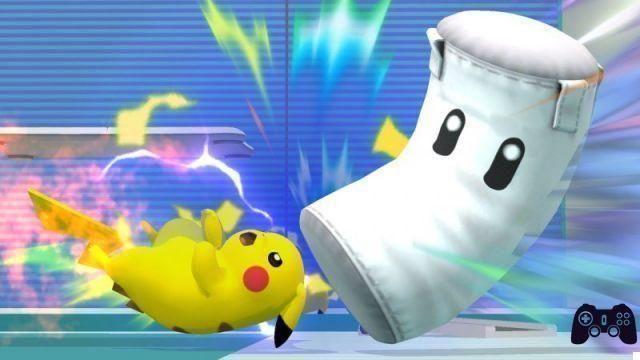
To make your efforts more effective, a certain amount of timing is essential: the ideal is to hit the bag for about 7/8 seconds, then pick up the club and hit it with it only at the last moment to ensure that the throw ends. with a long landing. Of course, the more you play on the edge of the seconds, the higher the chances of making a great pitch, but at the same time the chances of canceling the attempt are also raised by delaying too much. There is no general guide to face this challenge, each fighter can count on particularly effective shots. The best results, however, so far have been achieved by impersonating Ganondorf.
Weather in Cuccagna of Trophy
Trophy Rush is a mode that makes its debut in the saga in this chapter and that probably few have noticed since its icon is almost hidden in the sub-menu dedicated to trophies. In the initial phase, you have to invest a hoard of coins to buy time. The minimum amount of time that can be purchased is a 30-second unit that costs 180 coins. Additional seconds can be added to this base by paying 6 coins each, up to a maximum of 2 and a half minutes. Once the duration is established, the game drops a series of chests towards the character chosen by the player: some anonymous, made simply of wood or stone, others instead carry the symbol of coins, trophies or equipment. The player's aim is to break as much as possible by increasing the number of moves that make up the combo. The crates that cannot be destroyed accumulate and can go beyond the blue line located about 2/3 of the screen: their staying above the line will activate a sort of countdown that will cause the change in the color of the line itself, which will first become yellow and then red. If you are unable to clear the line, this will ultimately cause the platform on which your character is standing to collapse, causing a fair waste of time. To maximize the score it is important to distinguish the different types of objects and their functions. In addition to the crates of various shapes, in fact, from time to time a tool will be dropped towards the ground to be used to speed up one's task. Gold boxes, for example, contain a power-up that speeds up combo build-up. The bomb-shaped blocks, on the other hand, will explode taking nearby blocks with them (but so can you if you stay too close!). Finally, remember not to stay still in the same spot for too long to avoid being struck by lightning.
Mischia Streetpass
This mode is only available on Nintendo 3Ds. To be able to play you must have activated the Streetpass in the appropriate menu and have met other players with whom to exchange data. Once you have received data from other users, it is possible to start a game that takes place as a competition between spins framed from above. Your goal is to knock your opponents off the rectangular playing field. To do this, you can attack with A (pressing the button allows you to charge a more powerful attack) or dodge enemy attacks with R. Pressing A after a well-executed dodge can land a quick counter move, while the player who will miss a attack will find himself immobilized for a few seconds. If you are unable to find other players with whom to exchange data, it is possible to face this discipline in training mode. The differences in this case will be minimal, after all the opponents are always controlled by the CPU, however, since it is a training, victories and losses will not be reported in the register.
More on combat
After analyzing the most basic aspects of the game to make even those who have never played one of the previous chapters of the series feel at home, now is the time to go a little deeper and try to make those mechanics clearer and more legible. that you will surely have observed on the battlefield during your rhymes matches.
KO AND RECOVERED
As already repeated several times, your aim during the Melees is to hurl your opponents beyond the confines of the arena that hosts the clash. To increase the chances of your attempts being successful, you must hit opponents by increasing the percentage displayed next to the character icon below and thus making them lighter. However, this is not a mere exercise in style: knocking an opponent out of the level in Super Smash Bros. is essentially the same as hitting a KO in another classic fighting game. As already mentioned above, the flight out of the stage can be more or less decisive for those who suffer it according to the rules of the match (and if a return to the game is expected, those who have suffered a KO will return with the percentage at 0 %), but in any case it ensures a bonus to those who perform it at the time of the final evaluation. In order for the bonus to be awarded, make sure you are the last fighter to inflict a hit on the enemy before it falls. Whoever falls can prevent the KO from being awarded to a rival by self-inflicting damage. In this case, of course, one life will still be subtracted from the account of the one who falls, while the bonus will not be awarded to any of the other participants in the Melee. Being thrown away from the platform in the center of the stage however does not necessarily mean being a victim of a KO. The game offers at least two tools to try to recover from a bad situation. Yes, "try", because if the percentage of the character thrown into the air is too high it may happen that any recovery attempt will prove to be in vain. However, this does not mean that we must renounce the search for salvation. The first hope of remaining (literally!) Clinging to life is represented by the double jump: as the name implies, it is nothing too complex, just press the jump button twice in rapid succession. If, on the other hand, the distance is greater than that which the character can cover with a double jump, the special recovery move must be used. All characters have one, and it is generally done by pressing the B button while holding the analog stick up. In the most extreme situations, the last hope is entrusted to a combination of these two techniques: first a double jump to get closer, then a special recovery move to try to get back down to earth.
A CHESS GAME
Now that we're going to dig a little more into Super Smash Bros.'s combat system, you have to get used to a concept that is likely to revolutionize your outlook on the game: More than a fighting game, Super Smash Bros. can be compared to a game of chess played at a frenetic pace. Let's go back for a moment to that moment we were describing a few lines ago: your percentage is quite high, an enemy hit you hard and after a flight in the air you managed to miraculously cling to the edge of the platform with a combination of double jump and special recovery move. All is well that ends well, isn't it? Of course, unless some other fighter has not noticed your moment of difficulty and has decided to devote himself to controlling the edges of the arena, that is the technique that in English is defined as edge-guarding. What is it about? Simple, it is a patrol of the margins of the scenario, a predatory stalking to take advantage of the moments of weakness of the opponent who tries to re-enter the game after a close KO.
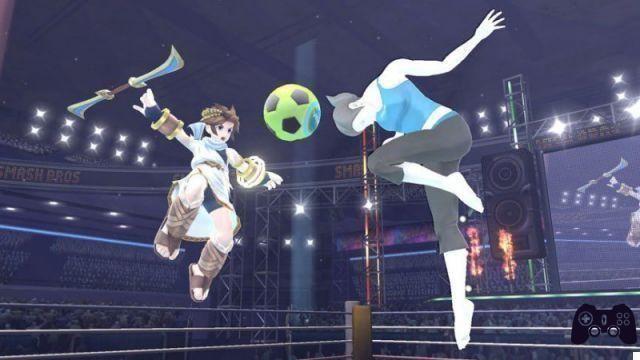
There is no safe move that ensures success for those attempting edge-guarding, but the strategy to be put into practice can change depending on the situation and the character you are controlling at that moment, ranging from a special move to an air attack. to be worn even before the desperate man is able to cling.
CONTROL OF MARGINS AND CONSEQUENCES
But don't forget our comparison with the chess game, that is a strategy game in which for every move there is a counter-move and the accounts are made in the long run. So, patrolling the borders may seem like a great idea at first glance, a great way to put bonuses on the farm by punishing opponents' recovery attempts. This strategy can certainly prove to be productive, but it exposes those who put it into practice to a series of risks that should not be underestimated. Focusing on one side of the scenario can in fact lead to letting your guard down and not noticing what is happening behind you. The ideal situation for those who want to land a Smash Attack. Smash Attacks are extremely powerful hits that are performed by pressing the A button and moving the directional stick all the way in one of four directions. In fact, there are four Smash Attacks available to each fighter, each associated with a different direction of the stick. Their power often hurls the hit opponent very far: this is essentially the ideal move to perform if you want to land a KO. However, we must not commit the imprudence of performing a Smash Attack with a light heart. It is a type of attack to be unleashed at the right moments, perhaps at the end of a combo or when the targeted opponent is distracted (perhaps because he is engaged in edge-guarding). Its power is in fact counterbalanced by the ease with which it can be dodged and by the brief moment of vulnerability to which those who execute it are exposed. It is therefore essential to make sure that your target is at that moment distracted and substantially unprepared for the arrival of a Smash Attack. As already mentioned, the ideal prey is a character stationed for edge-guarding, but even an enemy engaged in a desperate attempt to recover can be a tempting prey for this devastating blow. It will take some time to master Smash Attack, but once you learn when to use it, that is, those situations in which the odds that the Smash Attack will hit are as close to 100%, it will prove to be an indispensable resource. .
ATTACKS
Speaking of attacks, it's time to say a few more words about the different offensive options available to you. Let's start with the special moves that are performed with the B key. The most important concept to acquire regarding this type of moves is their scope. There are special moves that are effective only up close, others that are useful in the fight from a distance. Of course, keeping in mind the characteristics of the special moves of all the numerous characters that make up the Super Smash Bros. roster, however, keeping in mind at least those of the characters you use most often can be a good idea. Another type of move that few people know, but which can still be often useful is the tilt, that is the move that is performed with the Smash Attack button and a light tap on the directional stick. Generally these are less powerful hits than Smash Attack, but in some cases their effectiveness is directly comparable. In addition, these are moves that can be easily combined in a series of combos. It is always useful to remember that the combos in Super Smash Bros. differ slightly from those we are used to in common fighting games. The main reason is to be found in the famous percentage that affects the lightness of the opponents: it is difficult to chain a long series of shots if your opponent takes off in orbit after the first punch! Another element that complicates things is the possibility of resorting to the double jump by those who are under attack at that moment, an action that guarantees a comfortable escape route on several occasions. Not only that, some characters tend to move slightly from side to side after taking a hit, thus moving away from you and complicating the chances of ringing a series of consecutive hits. In these situations it is necessary to pay some attention to the opponent's behaviors and try to memorize them in order to react correctly during the subsequent exchange of blows. However, there are sequences that lend themselves more to the formation of a combo than others, for this reason experience and memory are basically the main qualities necessary to master the fighting mechanics of Super Smash Bros.
DEFENCE
However, the vastness of offensive options should not lead to underestimating the defensive phase. Indeed, precisely because the weapons available to our opponents are so many, we must always have a clear idea of what tools are at our disposal to defend ourselves and how they must be used. The defense basically revolves entirely around the use of the shield, a very useful tool, but easily consumable, which still requires some attention. The shield is activated by pressing and holding the relevant key. This gesture generates a bubble around the fighter that will gradually shrink while the pressure is maintained, until it is completely consumed leaving the fighter who was inside stunned and paralyzed for a very delicate moment. The recharging of the shield takes place automatically from the moment you stop using it, so the bursting of the bubble does not preclude its use in the future, however it is always good to avoid consuming the shield entirely since, as just said, this momentarily exposes to the attacks of the revelations without the possibility of resisting. It is also worth noting that only the parts inside the bubble are fully protected from its effects, while any protruding limbs or body parts can still be attacked by enemies. To compensate, it is allowed to move while the shield is in position, but this exposes the defending player to further risks, since the movement cancels the momentary invincibility for very short moments.
How to unlock hidden characters
As you know, both the 3Ds version and the WiiU version of Super Smash Bros. include a rather large roster of characters. However, the roster of fighters available can be further expanded by unlocking some hidden characters. On both WiiU and 3DS you can use two different methods: completing a certain number of Melees, or meeting specific requests for each character. However, after you unlock a character, it will appear in the fighter list, but it cannot be used. To unlock its use you will have to insert it as a fighter used by the CPU in a melee: at the end of the meeting you will be challenged in a 1 vs 1 at the end of which the character who challenged you will become usable. So let's see what to do to impersonate the characters hidden in the two versions.
3DS
Ness: Complete 10 Scrums or complete Classic Mode at any intensity
Falcon: Complete 20 Scrums or complete Classic Mode at any intensity without Game Over
Wario: Complete 30 Melee or complete 100-man Melee
Lucina: Complete 40 Scrums or complete Classic Mode at any intensity with Marth
Dark Pit: Complete 50 Melees or complete Classic Mode at any intensity with 8 or more characters
Dr. Mario: Complete 60 Scrums or complete Classic Mode with Mario at intensity 4.0
R.O.B.: Complete 70 Melees or get 200 Trophies, then participate in a Melee or Classic Mode
Ganondorf: Complete 80 Scrums or complete Classic Mode with Zelda or Link at intensity 5.0
Mr. Game & Watch: Complete 90 Melees or complete Classic Mode at any intensity with 10 or more characters
Bowser Jr.: Complete 100 Scrums or complete Classic Mode with Bowser at Intensity 6.0
Duck Hunt: Complete 110 Melees or complete Classic Mode at any intensity with 8 or more characters
Jigglypuff: Complete 120 Melees or collect at least 30 equippable items
WiiU
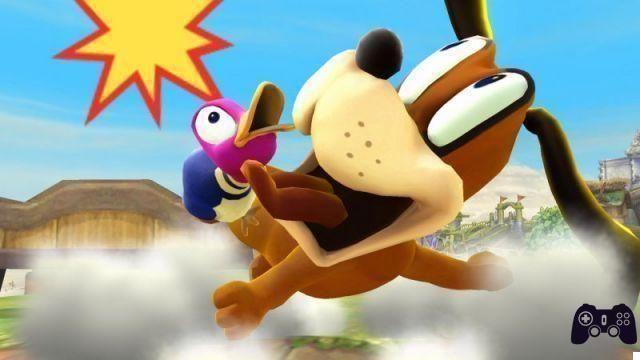
Falcon: Complete 10 Scrums or complete Classic Mode at any intensity
Wario: Complete 20 Melees or complete 100 Melee Mode.
Lucina: complete 30 Scrums or complete Classic Mode at intensity 5.5
Dark Pit: Complete 40 Melees or complete All-Star Mode (Normal difficulty)
Dr. Mario: Complete 50 Melees or defeat Master Hard (Hard difficulty)
R.O.B.: Complete 60 Melees or complete 10 Challenges in Crazy Hand Requests mode, then defeat Crazy Hand
Mr. Game & Watch: Complete 80 Melees or complete Classic Mode with 5 different characters at any intensity
Duck Hunt: Complete 100 Scrums or KO an opponent in a Multi Scrum
How to unlock hidden scenarios
3DS
Flat Zone 2: Beat Mr. Game & Watch in a Melee after unlocking him
Deamland: perform a Final Smash as Kirby in a Melee
Balloon Fight: participate in three Melees as the Citizen
Pac-Maze: perform a Final Smash as Pac-Man during a Melee
Magicant: beat Ness in a Melee after unlocking him
WarioWare Inc.: Beat Wario in a Melee after unlocking him
Mute City: win three Melees using Captain Falcon
WiiU
Pac-Land: plays on all boards in the Tabletop Melee mode
Congo Jungle 64: completa l'evento "The Original Heavyweights"
Smashville: completa l'evento "Playing Tricks"
Pokemon Stadium 2: complete the "When Lightning Strikes" event
Duck Hunt stage: get a KO in a Multi-Melee
Flat Zone X: Break 100 blocks in a game of Trophy Bitch as Mr. Game & Watch
Smash Adventure - In-depth analysis
This mode, available only on 3DS, proves to be more complex to the proof of the facts than it may appear superficially, which is why it is worthwhile to dedicate an in-depth study to it. As already briefly mentioned above, the Smash Adventure is made up of two distinct phases. A first 5-minute action-platform section sees you move inside a dungeon against CPU-controlled opponents in order to collect items and power-ups to be used in the second and final phase of the adventure. After 5 minutes, in fact, you are catapulted into the final confrontation face to face with three other contenders: usually this battle is played according to the rules of the Melee, but occasionally it can happen to find yourself involved in clashes with alternative rules. To be more competitive in this final Melee, therefore, it is necessary to work hard in the 5 minutes available to collect the largest number of objects scattered around the scenario and at the same time defeat as many enemies as possible, since even the opponents eliminated in this juncture (which come from from the most famous Nintendo series) reward the player with useful power-ups.
In any case, a good part of the action-platform phase will be spent trying to collect the items that guarantee a boost in the statistics of your character in view of the final Melee. In this regard, it is good to start looking for stat boosts with clear ideas right away, in order to maximize the strategic gain associated with their collection. Since the time at one's disposal is limited, it is necessary to opt for an attitude aimed at maximizing the qualitative aspect of the research or the quantitative one. In the first case you need to know the statistics of your character well and have a precise idea of the style of play that you intend to keep and based on these parameters it is the case to decide which objects to address. For example, having to compensate for the shortcomings of a rather slow and not very incisive character in attacks, you can decide to move in search of stat boosts linked to speed and attack, or on the other hand you can decide to maximize your strengths: in any case the exploration of the map becomes an exercise aimed at collecting specific objects, perhaps placed in places that are difficult to reach at the expense of others that are more accessible, but less useful.
A more caciarona strategy instead sees the player move without precise guidelines, with the exception of the only planned mission, that is the collection of the greatest number of items regardless of their usefulness. So much the better in short. Without setting specific objectives, we leave it to fate to decide the enhancement to which our character is subjected at the end of the first phase, then adapting accordingly one's fighting style and what has been collected and not vice versa: if the item lottery rewarded us with an above average speed we will move non-stop, if instead the bullets will enjoy the greatest boost, well then we will become an unstoppable firing machine. Obviously, for this strategy to be effective, you need to focus only on the objects at hand and the enemies that are easier to defeat, leaving out all those possibilities that would imply a waste of time to be exploited.
To help you make your own decisions during the game, we now provide a quick description of each stat boost and its effects. Let's start with the Attack, which, as easily understood, deals with enhancing your offensive skills. Be careful though because its aura only covers basic moves, so tilt, smash and air strikes, while grappling and special are excluded from its beneficial effects. Defense, on the other hand, is the counterpart of the previous stat boost.
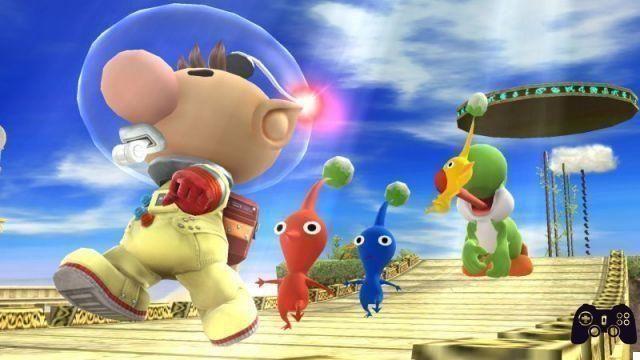
It doesn't boost a precise move, but it does increase the stamina of your shield and slow the percentage increase, making you actually more massive and harder to hurl off platforms. The offensive abilities that remained excluded from the first stat boost we examined are instead enhanced by Bullets, stat boost that increases the range as well as the hits from a distance also of the grips and objects: not only then the characters that will end up in your clutches will be thrown farther away, but objects will also fall less likely to favor your opponents after being thrown to the ground. Obviously this is a power-up that greatly favors those characters who can boast of bullet shots in their repertoire. Leap is perhaps the most intuitive of stat boosts, but it shouldn't be forgotten that its range extends beyond simple leaps. Thanks to the jump, therefore, you will not only jump higher, but you will move faster in the air and you will also return faster to the ground. With characters that base their style on jumping, this power-up can turn you into unattainable warriors. While previous upgrades work the same on all characters, the Special modifies its effects depending on who equips it. In the case of a slow-loading Special, this boost will shorten the time needed for its execution, while in the face of a Special with a limited range, it will take care to extend its range of effectiveness. Keep in mind that during the action / adventure phase you may also collect items that provide your character with new Specials or alternative versions of the classic one. Don't snub them, because it is not uncommon to come across versions that surprisingly improve the effectiveness of a Special that was already considered very powerful. The last missing stat boost is Speed, and undoubtedly it is also the most delicate to use. Its effect is very simple, it increases the movement speed of your character, but this increase in performance can prove to be a double-edged sword because it is true that an extremely fast fighter is more difficult for opponents to grasp, but the difficulty in the control increases exponentially along with speed. In short, if you are a beginner and tends to commit suicide more often than you would like, better aim for something else. With all these notions firmly in mind you are ready to launch yourself towards the final Melee therefore, but first there is still a small step to consider. The entrance to the Arena is preceded by the choice of a piece of equipment (among the three available collected in the previous sessions). These items have the characteristic of enhancing a statistic to the detriment of another: for example, they can add some points to the Attack while subtracting some others from the Defense. Their use therefore can serve two purposes: to build a more balanced character or to enhance a single skill beyond all limits. In our opinion, the second hypothesis is a very risky strategy that requires a great mastery of the character to prove to be a success.
Classic Mode - Intensity and Boss
The Classic Mode carries on its shoulders almost all the weight of the singleplayer sector of Super Smash Bros. Of course, as we have already seen there are several other modes that allow you to compare yourself with the CPU, but without the sense of progression that is usually found in the typical story fashions of fighting games. Although it cannot count on a real background story, the Classic Mode still offers a path to cross, improving from meeting to meeting, up to face one or more final bosses at the apex of the climax. The different challenges offered by this mode, which range from 1 vs 1 to Melees with numerous fighters, are also fundamental to expand your roster of arenas and fighters: as seen in one of the previous paragraphs, in fact, several hidden characters can only be obtained by completing the Classic mode at different intensity levels. But what is this intensity?
To put it very simply, the intensity of Classic Mode determines the level of difficulty you will face. First of all, however, it must be clarified that the intensity level is not freely selectable. In fact, to increase the intensity it is necessary to spend a certain amount of coins previously obtained, so without the necessary loot in coins, the higher intensity levels remain unattainable. In any case, it is still advisable to go step by step and test your skills step by step, raising the bar of the challenge a little at a time. In fact, at the highest levels you will find yourself facing much more difficult and tenacious opponents than those faced in normal melee against the CPU. Not only will their fighting style change, but their values will also be higher than the norm. This will force you to adapt to the situation, favoring ranged combat based on bullets and learning to exploit with tactical acumen the possibilities offered by the objects that appear on the battlefield. Before the attack, however, it is good that you learn to better master the defensive management of your character, because at the higher intensity levels you will not be able to allow even a small opening to your rivals if you do not want to undergo hard lessons. There are no general rules to use during the meetings that precede the battles with the bosses, however it is essential to adapt your attitude according to who you are in front of. With bigger opponents, for example, it becomes essential to almost completely avoid physical contact and manage the fight mainly on the medium or long distance. Metallic enemies, on the other hand, have a much higher specific gravity than normal rivals, which means that it will take many more hits to make them light enough to be thrown out of the arena. Finally, in some cases you can count on the support of some CPU-controlled companions: it may seem like a lamer tactic, but no one will judge you if you leave them the onerous task of doing the hard work while you stand a little on the sidelines, trying to limit the damage.
Master Hand
The first boss in Super Smash Bros. Classic Mode is also the easiest to defeat. I know, if you do not have much experience with the saga and you have ventured for the first time in the obstacle course represented by this mode you may find our words crazy, but believe us, over time you will no longer encounter major difficulties in getting out of the way. Master Hand and its devious attacks. The key to turning Crazy Hand in your favor is avoiding his two most dangerous attacks. The first is the sling with the finger: Crazy Hand fits the middle finger on the last joint of the thumb, loads the shot, then lets go of the middle finger making it spring. Fortunately for you, this is a rather simple move to anticipate, thanks to the long animation it takes to set it up, and you just have to move out of the range of the finger to earn safety. If you are hit, however, in addition to the damage, you will suffer a stun effect that will last for a few seconds, leaving you at the mercy of the Crazy Hand blows: at higher intensity levels this almost certainly means game over. The second move to fear is the lifting of the tiles from the floor: to escape it, just jump, but it is not as simple as it seems. It is not excluded that immediately after the jump a second row of tiles will lift off the floor, forcing you to jump again. For this reason it is advisable not to use a double jump for the first escape and to play this possibility only at a later time. If you fail to escape the tile, you will inexorably end up KO.
Crazy Hand
Master Hand's companion is just as powerful, but less linear in behavior. His substantial impetuousness and the habit of executing shots quickly, without following a legible thread, makes it essential to use all the defensive tools at your disposal, obviously preferring the shield and the roll. Always keep your eyes peeled and be prepared to take advantage of every opening in Crazy Hand's guard to sink shots, as you may not have many opportunities to do so. Of course, keeping your distance is always a good idea so let the bullets, as far as possible, represent the vanguard of your offensive phase and be ready for anything.
Master Core
After the intensity level of 7.0, in addition to Master Hand and Crazy Hand you will also have to deal with Master Core. The latter represents the last boss of the game and make his appearance after the defeat of his two underlings. The true form of Master Core, the core, will reveal itself only after you get rid of the three (or four in the case of the 3DS) "masks" with which it decides to face you, more or less dense depending on the level of intensity. Master Core initially presents itself to you in human form. The advice in this situation is to maintain a strongly defensive strategy, first of all worrying about parrying or avoiding his blows and paying attention to the micro-openings he gives you to counterattack. Once Master Core has adopted the Insectoid form, don't make the mistake of keeping the shield raised for too long as your opponent could break it in a short time. The worst, however, is yet to come. The penultimate transformation of Master Core sees him take on the guise of a dark version of your character with exactly the same abilities as you. This mirror battle becomes a matter of nerves: you don't have any kind of advantage over yours other than human intelligence, less predictable than the artificial intelligence of the CPU. Do not let yourself be rendered by the enthusiasm, reason be prudent. Don't worry, there will be a way to go wild. As soon as Master Core takes on its final form you will have to use all your most powerful attacks to try to get an immediate KO as soon as possible. In fact, every second that passes brings you closer to Master Core's terrible wave attack, an unstoppable burst of energy that will immediately KO your fighter, regardless of his energy level, thus forcing you to start over.
Survive online
Coming to that, you should handle the underlying principles of Super Smash Bros. well enough to fare well enough against the CPU. Okay, so maybe you haven't unlocked all the characters yet and passed Classic Mode at the highest intensity level, but you feel like you can get away with it by now. In short, the time has come to venture into the online competition, or to use a colorful metaphor, drop into the tigers' den. If you have already faced this path, you will certainly know that the first impact can be quite traumatizing. Super Smash Bros. lends itself to different interpretations ranging from lighthearted scrums between friends to an ultra-competitive approach that makes the Nintendo fighting game a title often protagonist of tournaments dedicated to him. The first advice, certainly the most obvious, in these cases is not to give up. The first few games will be a massacre, but it does nothing, if you have never trod an area against human opponents before, it is normal to be defeated. Indeed, it is useful: there is no better way to learn than to face more skilled and experienced players, observe their moves and try to replicate them. Of course if you are really a beginner it is better to concentrate on the melee "for fun", but a trip to the rooms "for the glory" (which host the ranked matches) from time to time can do well to get used to the combat levels. higher, as long as you don't allow yourself to be too disheartened by defeats.
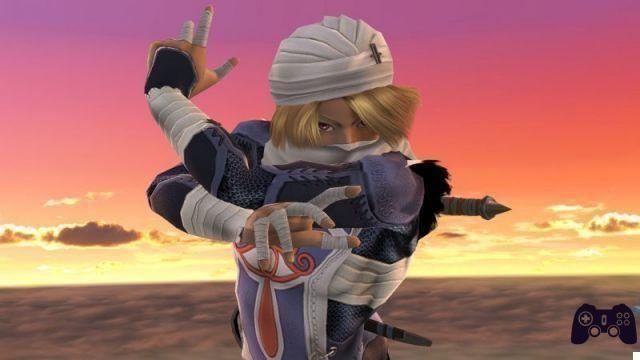
Take the time to build your online skill, but have a method. We talked about it before, Super Smash Bros. looks like a game of chess and exactly as if you were sitting in front of a chessboard you have to learn to predict the opponent's moves based on an analysis of his behavior. Try going back a few paragraphs above, when we talked about how complicated it is to perform combos. The difficulty is given by the different possible reactions of your opponent. Whoever is undergoing can roll, can jump, can lock himself in the shield. The chances of success increase as you understand the fighting style of whoever you are facing. And this is even more true online, where the attitude of your opponents is determined by their synapses and not by an algorithm elaborated by a processor. Work out your own style then, but base your moves on observation.
Before throwing your head down in a fight it can be useful to take a few moments to try to understand how the other fighters in the arena behave. There are those who tend to jump after being attacked and those who counterattack, those who try to chain combos and those who alternate between one enemy and another without interruption. Obviously the simple observation alone is not enough, you will have to sweat a lot to master all the dynamics that we have exposed to you in this very long guide, but the lively eye is always a good starting point. Always keeping your concentration high is another suggestion that is fairly obvious, but it is never useless to repeat: the ability to read the scene improves from game to game, but it cannot be infallible. When an opponent who expected to react with a jump will surprise you with an unexpected reaction, you must be ready to face this unexpected change of scenery by preparing as soon as possible useful countermeasures to avoid ending up in a doll and embarking on a load of shots from which it will be hard to recover. . Unpredictability is paradoxically one of the cornerstones of Super Smash Bros. online games. Not only is the behavior of other players much more difficult to predict than the more schematic and routine of the CPU, but the rain of objects on the arena can change suddenly the course of a session that seemed already written. Knowing all the items, knowing how and when to use them, not having particular mental closures towards an object can be an extra weapon in your repertoire, an ace to fall to catch the other fighters on stage by surprise. Finally, it is worth mentioning the psychological aspect of the clashes. Making the opponent nervous is a picklock to undermine their defenses. You will notice right away that the offensive propensity is quite widespread among Super Smash Bros. players who instead close in defense avoiding the direct confrontation in favor of quick and precise shots in the open weak point tend to blow the bank. The defensive player is a variable that does not appear so often and for this reason undermines the certainties of the ultra-offensive player, accustomed to face-to-face clashes. Taking care of the safety of your percentage and limiting the offensive gusts to safe assaults will end up weakening the certainties of the strongest opponent you are facing. In short, time can be your ally: if you can't play it openly, bet on cunning.
How to unlock ...
Hidden Trophies:
Toad: get at least 30 different trophies.
Epona: Complete All-Star Mode on easy level.
Peach & Birtday Girl: Complete at least three Scrums in the Rainbow Road arena.
Bonkers: throw the sandbag at least 300 meters in the Home-Run Race.
Timmy & Tommy: launches the Trophy Cuccagna for the first time.
Mazza Home-Run: starts the Home-Run Race for the first time.
Cragalanche the Mighty: participate in at least three Melees in the Reser Bomb Forest arena.
Asta di Dark Pit: unlock the hidden character Dark Pit.
Karate Man: Get at least 20 KOs in the 3 minute Melee.
Mr. Saturn: vinci du Mischie as Ness.
Blast Box: get a score of 100.000 or higher on Target Shoot.
Afraid: get 150 trophies.
Bomb King: get a combined score of at least 2.000.000 on Target Shoot.
Golden retriever: participate in at least 3 Melees in the Living Room arena.
Master hand: complete Classic Mode with at least 5 different characters.
Dark Emperor: participate in at least 3 Melees in the Find Mii arena.
Fire Stingray: defeat 30 or more opponents in the Multi Melee.
Tortimer Island: unlock all arenas.
Knuckle Joe: play multiplayer for at least 10 hours.
Jellyfish: Complete All-Star Mode on normal difficulty or higher.
Ketzal's Corridors: complete Classic Mode at intensity 9.0.
Miki: unlock all abilities, headgear and body gear.
Crazy Hand: complete Classic Mode with all characters.
Sandbag: throw the sandbag to 15.000 meters or more in the Home-Run Competition (overall score).
Luigi (Poltergust): collect 500 trophies or more.
Kat & Ana:: Complete the 10-man Melee with all characters.
Shadow: Complete the 100 Versus Melee with all characters.
Color TV-Game 15: play multiplayer for at least 50 hours.
Dark Train: plays Shoot the target with all the characters.
Green Koopa Troopa: hit at least 20 opponents in StreetSmash.
Nintendouji: Complete All-Star Mode on hard difficulty.
Hidden objects:
Horizon Beam level 1: ranked first in at least one final Smash Adventure battle.
Heading Enhancement level 1: collect five custom hats.
Reflector level 2: get at least 10 items in Smash Adventure.
Body Attack Enhancement livello 1: unlocks three custom body parts.
Rolling Blasde livello 2: ranked first in at least five final battles of Adventure Smash.
Beam Sword Use Speed Badge: achieve a combo of at least 40 moves in Training.
Running Speed Up Speed Badge: customize three characters.
Hyper Smash Attack Badge: achieves at least 100 KOs.
Shine Spark level 2: play StreeSmash with at least 5 different users.
Shot Down Recovery Defense Badge: roll a 10 in Rival Melee.
Mach Stamp Level 2: Collect at least 25 items in the Smash Adventure.
Auto Recovery Attack Badge: Complete the 100 vs XNUMX Melee.
First Hitter Speed Badge: get at least 20 counters in StreetSmash.
Home-Run Bat Use Speed Badge: throw the sandbag at least 600 meters in the Home-Run Race.
Horizon Beam livelo 2: play Smash Adventure at least 5 times.
Smash Ball Attraction Speed: unlock 15 custom skills.
Critical Hit Attack Badge: score 300 KOs.
Quick Swing Batter Attack Badge: play the Home-Run Race with 15 different characters.
Level 3 Leader: throw the sandbag at least 1000 meters in the Home-Run Race.
Dual Cyclone level 3: Complete Smash Adventure at least 20 times.
Air Defense Up Defense Badge: customize 10 characters.
Recovery livello 3: roll a 50 in Rival Melee.
Squat Recovery Defense Badge: Defeat at least 110 opponents in the 3-minute Melee.
Walking Speed Up Attack Badge: walk for a total of 50 km.
Quick Smash defense badge: Complete the 10-man Melee in 10 seconds or less.
Jump Strengthening Speed badge: score 400 hits in Training Mode by adding up all the characters used.
Shuffle level 3: Complete Smash Adventure with all characters.
Hi Jump level 3: jump for 10 km or more.
Launch Skill Attack Badge: get 1.000 KOs.
Just Shield Explosion Defense Badge: defeat two or more opponents in Cruel Melee.
Futtobi Ring: Defeat 200 or more Multi-Melee opponents.
Hidden Mii Gear:
Football helmet: create at least one Mii fighter.
Super Mushroom Hat: play Rival Challenge for the first time.
Luigu hat:: Win three Melees as Luigi.
Spiny Hat: play a Cruel Melee for the first time.
Princess Zelda wig: win two Melees as Zelda.
Samus helmet: win ten Mischie as Samus.
Kabuto hat: Collect five different costum body kits.
Gentleman's Hat: create at least 8 Mii fighters.
Royal Armor: Collect 10 different custom head gear.
Crown: complete All-Star mode with all characters.
Steampunk clothes: destroy all red targets in Target Pop.
Protector Suit: Get a 100 hit combo in Training Mode.
Princess Crown: play for at least 20 hours.
Lion's hair: defeat 4 or more opponents in Cruel Melee.
Prince hat: collect all items in Smash Adventure.
Hidden skills:
Big Ball (Wii Fit Trainer): get a 10 hit combo in Training.
Lightning Falcon Kick (Captain Falcon): play StreetSmash for the first time.
Liftoff Lloid (Inhabitant): play at least twice in the Tortimer Island arena.
Giant Bomb (Link): destroy at least 300 blocks in Trophy Bunker.
Muscle Bomb (Ike): destroy at least 1.000 blocks in Trophy Bunker.
Speed Drill (Meta Knight): crane 5 Mischie con Meta Knight.
Pop Gun Explosion (Diddy Kong): destroy at least 3.000 blocks in Trophy Bunker.
Easy Combination (Martin): Complete the 100 vs 3 Melee in XNUMX minutes or less.
Explosive Punkch (Mario): get a score of 200.000 or higher on Target Shoot.
Hidden Pokemon
The neighbors: play the Melee against 100 for the first time.
Genesect: play the Multi-Melee for the first time.
Zoroark: Complete at 10-man Melee.
Meloetta: play 8 hours or more.
Music
Menu 2 (DX): unlock all hidden characters.
All-Star Rest Area: Complete All-Star Mode with 15 characters
Help Video - Gameplay
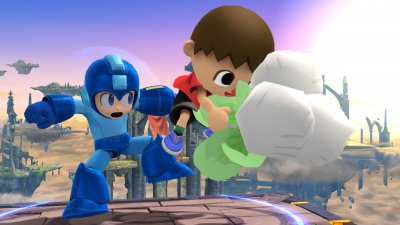 Super Smash Bros. wiiu
Super Smash Bros. wiiu
- WiiU
- 3ds
Exit date: November 28, 2014




